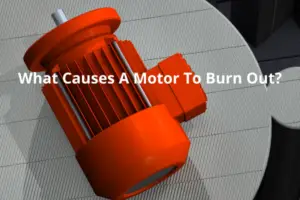Voltage drop is a common problem that can occur in electrical circuits, and it can have a significant impact on the performance of electric motors.
In this article, we will explore the effects of voltage drop on motors and how to mitigate them.
Table of Contents
What is voltage drop?
Before we dive into the impact of voltage drop on motors, let’s first define what voltage drop is. Voltage drop is a reduction in voltage that occurs when electrical current flows through a conductor, such as a wire or a motor.
This can happen due to several factors, including the resistance of the conductor and the length of the conductor.
Voltage drop is typically measured in volts and is expressed as a percentage of the nominal voltage.
For example, if the nominal voltage is 120 volts and the voltage drop is 10%, then the actual voltage at the motor will be 108 volts (120 volts – 10% of 120 volts).
Impact of voltage drop on motors
Voltage drop can have several negative effects on electric motors, including:
- Increased motor current: When the voltage drops, the motor will attempt to maintain its torque and speed output by drawing more current.
- Reduced motor speed: Voltage drop can cause the motor to run at a slower speed than intended. This can be problematic in applications where precise motor speed is critical, such as conveyor belts or automated assembly lines.
- Reduced torque: Voltage drop can also reduce the torque output of the motor. This can lead to reduced efficiency and increased energy consumption, as the motor has to work harder to achieve the desired output. A 10% voltage drop has reduced the torque output of the motor by nearly 40% as I will explain to you later in this article. This can cause a range of problems, including reduced efficiency and increased energy consumption. If the motor is not able to produce enough torque to perform the required task, it may stall or trip its overload protection. This can cause downtime and increase maintenance costs.
- Overheating: Voltage drop can cause the motor to overheat, which can be damaging to the motor’s insulation and winding. Overheating can also shorten the lifespan of the motor, as it can cause components to degrade more quickly.
- Increased maintenance costs: When a motor is operating under suboptimal conditions, it may experience more frequent failures and require more maintenance. This can increase maintenance costs and reduce overall productivity. Read my Comprehensive article about Electrical Maintenance.
- Reduced lifespan: All of these factors can contribute to a reduced lifespan for the motor. If the motor is not able to operate under the intended conditions, it may wear out more quickly or experience premature failures. Read my in-depth article Maximize the Lifespan of Motors and Transformers.
Mitigating the effects of voltage drop
There are several ways to mitigate the effects of voltage drop on motors, including:
- Voltage regulation: The most effective way to mitigate voltage drop is to regulate the voltage. This can be done using devices such as voltage regulators or by using a transformer to step up or step down the voltage as needed.
- Proper wiring: Proper wiring can also help reduce voltage drop. This includes using appropriately sized wires for the application and minimizing the length of the conductor.
- Regular maintenance: Regular maintenance can help identify and address voltage drop issues before they cause significant damage to the motor. This can include inspecting and cleaning the motor, as well as checking the voltage at various points in the circuit.
Example Calculation
Let’s take an example to illustrate the impact of voltage drop on a motor. Suppose we have a motor with a nominal voltage of 120 volts and a resistance of 5 ohms. If the voltage drop is 10%, then the actual voltage at the motor will be 108 volts (120 volts – 10% of 120 volts).
Using Ohm’s Law, we can calculate the current flowing through the motor as follows:
I = V / R I = 108 volts / 5 ohms I = 21.6 amps
Now, let’s suppose that the motor is designed to operate at 120 volts and deliver a torque of 100 Nm. If we reduce the voltage to 108 volts, then the torque output will also decrease:
T = k * I * V T = 100 Nm / 120 volts * 21.6 amps * 108 volts T = 166.67 Nm
So, in this example, a 10% voltage drop has reduced the torque output of the motor by nearly 40%.
Why Does Voltage Drop Increase Motor Current?
When the voltage drops, the motor will attempt to maintain its torque and speed output by drawing more current. This is because the power delivered to the motor is proportional to the product of the voltage and current.
Therefore, if the voltage drops, the motor must increase its current draw to compensate for the loss in power.
The increased current draw due to voltage drop can have several negative consequences for the motor, including overheating, reduced efficiency, and increased wear and tear on the motor’s components.
As the current draw increases, the motor’s temperature rises, and this can lead to insulation breakdown and winding damage. Additionally, the increased current draw can result in voltage drops in other parts of the electrical system, which can further reduce the motor’s efficiency and performance.
To prevent the negative effects of voltage drop on motor current, it’s important to ensure that the electrical system is designed correctly, with appropriate wire sizes, fuses, and circuit breakers to handle the expected current loads.
It’s also important to monitor the voltage levels and current draw of the motor regularly and to take corrective action if necessary. This can include adjusting the motor’s operating conditions or upgrading the electrical system to improve its performance.
Why Does Voltage Drop Increase Motor Temperature Rise?
Voltage drop can cause a motor to overheat because it leads to an increase in current draw. When the voltage drops, the motor will attempt to maintain its speed and torque output by drawing more current. However, this increased current draw generates heat, which can cause the motor to overheat.
Overheating can be damaging to the motor’s insulation and winding. Excessive heat can break down the insulation, causing it to degrade and eventually fail. It can also cause the winding to expand and contract, leading to mechanical stresses that can damage the winding and other components.
If the motor is exposed to prolonged periods of overheating, it can also result in the degradation of lubricants, bearings, and other mechanical components, further increasing the likelihood of motor failure.
To prevent overheating due to voltage drop, it’s essential to take steps to ensure that the motor is operating under optimal conditions. This includes maintaining the correct voltage levels and avoiding voltage drops caused by inadequate wiring, undersized conductors, or excessively long cable runs.
why does the voltage drop Reduce motor speed?
Voltage drop can cause a reduction in motor speed because it results in a decrease in the available power to the motor.
The motor’s speed is determined by the frequency and voltage of the power supply, and a decrease in voltage reduces the power supplied to the motor.
When the voltage drops, the motor’s magnetic field weakens, reducing the motor’s torque output. This causes the motor to slow down as it is no longer able to maintain its speed under the reduced torque load. The amount of speed reduction depends on the severity of the voltage drop and the load on the motor.
In some cases, a small reduction in motor speed may not be significant, especially if the motor is operating under a light load. However, if the motor is driving a heavy load or operating under precise speed control, even a small reduction in speed can cause significant problems.
For example, in conveyor belt applications, a reduction in motor speed can cause the belt to slip or stall, leading to downtime and increased maintenance costs. Similarly, in machine tool applications, a reduction in motor speed can affect the precision of the cuts, leading to suboptimal product quality.
Conclusion:
Voltage drop can have a significant impact on electric motors, causing reduced motor speed, reduced torque output, overheating, increased maintenance costs, and reduced lifespan.
It is essential to take steps to mitigate the effects of voltage drop, including voltage regulation, proper wiring, and regular maintenance, to ensure that motors operate under optimal conditions and achieve their intended performance.
Don’t Leave Empty-Handed!
Install my Free Android App on Google Play:
Electrical Cables Most Common Tables “Cables Tables”
And, my Electrical Calculations App “Fast Electrical Calculator”
Discover more great content by subscribing to My channel
Looking to stay ahead of the game in the world of electrical engineering? Subscribe to my YouTube channel and gain access to exclusive content you won’t find anywhere else!
The staff I recommend
(Amazon Affiliate Links to products I believe are high quality):
- Economy 120 Volt/60Hz AC Power Source – Step-Down Voltage & Frequency Converters 1800W
- UNI-T Digital Multimeter Tester UT139C
- 50-Amp Extension Cord for RV “100ft”
- Voltage Stabilizer 110/220v
- Hair Dryer “best selling“
- TOSHIBA EM131A5C-BS Countertop Microwave Ovens
Disclaimer: This contains affiliate links to Amazon products. I may earn a commission for purchases made through these links.



